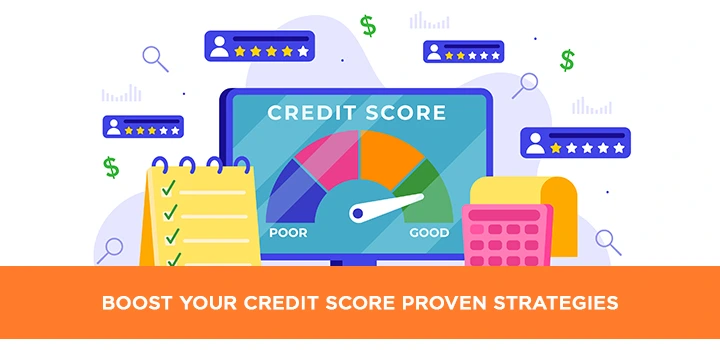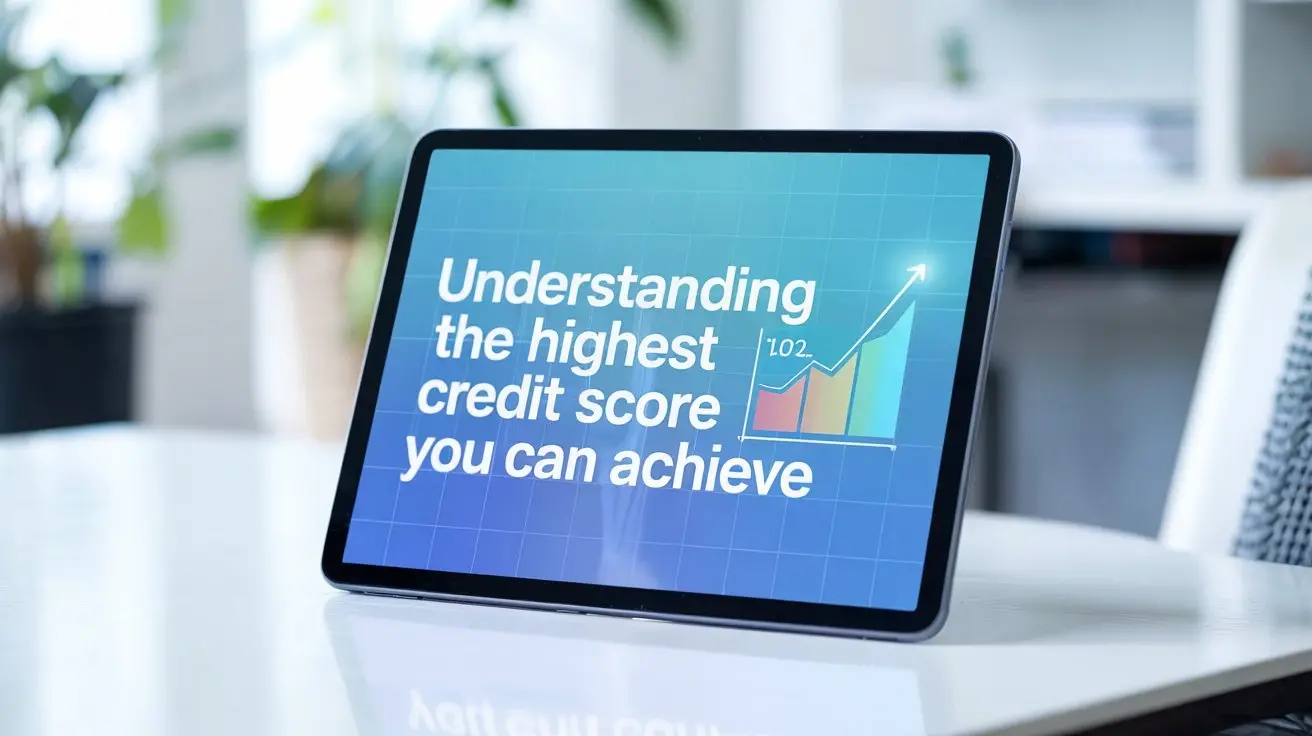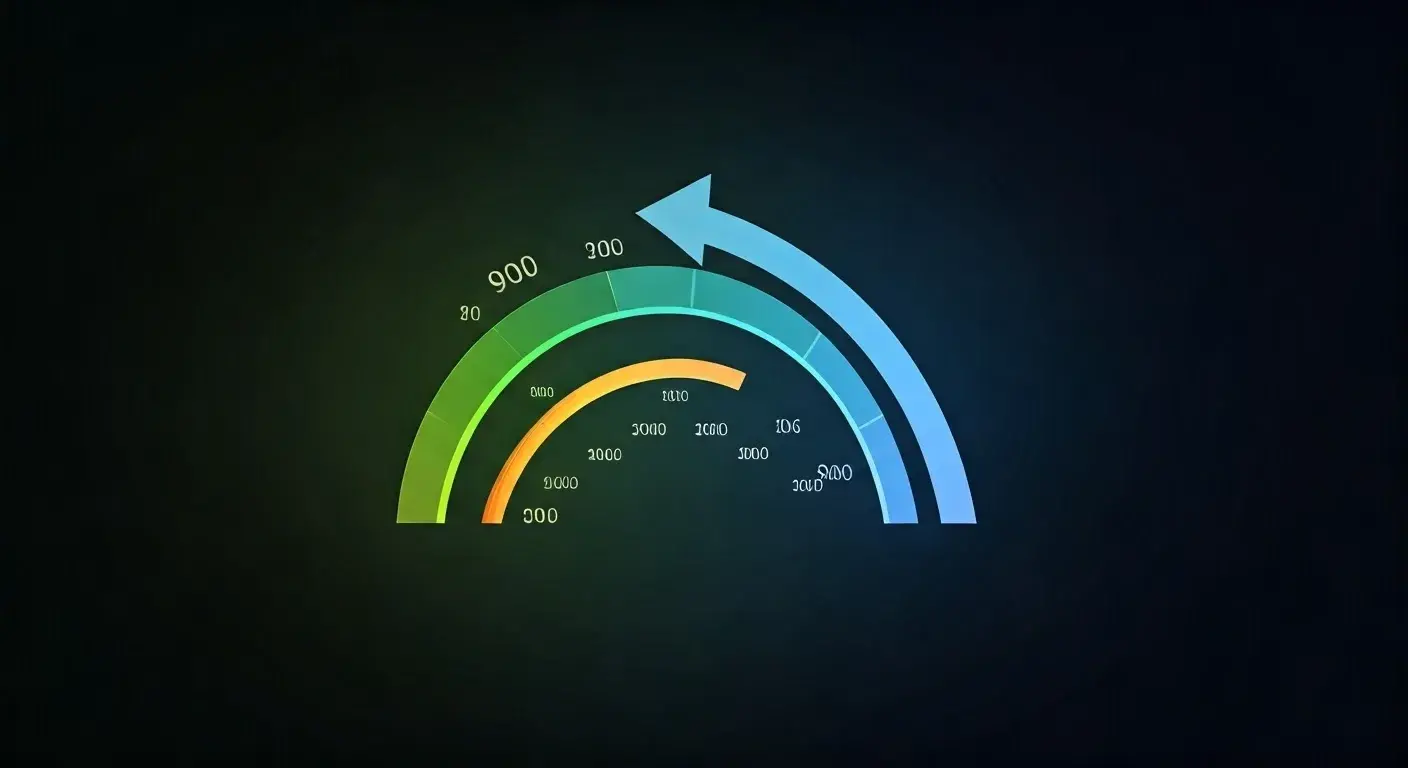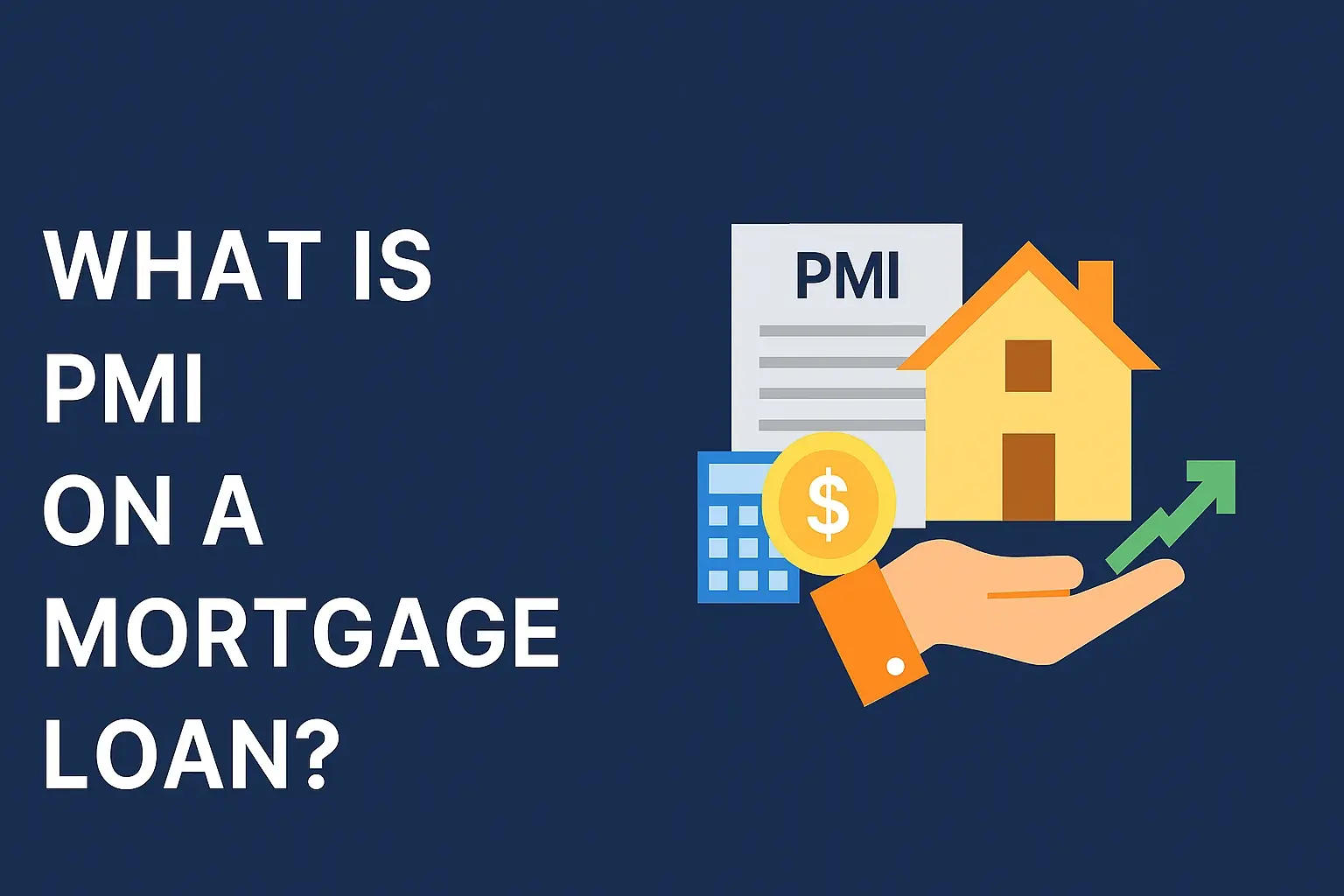-
Posted on: 30 Jun 2023

-
Ready to unlock better financial opportunities? This comprehensive guide reveals proven strategies to significantly boost your credit score, offering actionable insights and expert tips for achieving a healthier financial future. Discover how to navigate credit effectively and build a strong foundation for your borrowing needs.
Understanding Credit Scores: The Foundation of Your Financial Health
In the realm of personal finance, your credit score acts as a crucial indicator of your creditworthiness. It’s a three-digit number, typically ranging from 300 to 850, that lenders use to assess the risk associated with lending you money. A higher score signifies a lower risk, often translating into better interest rates on loans, easier approval for mortgages and car financing, and even more favorable terms for renting an apartment or securing a cell phone contract. By 2025, the importance of a robust credit score is only amplified, with more financial institutions leveraging sophisticated algorithms that heavily rely on this metric.
Understanding the mechanics behind your credit score is the first, indispensable step toward improving it. While various scoring models exist, such as FICO and VantageScore, they generally weigh similar factors. These factors are designed to predict your likelihood of repaying borrowed money. For instance, a FICO score, which is widely used, breaks down the calculation into five primary categories, each carrying a specific weight. Knowing these components empowers you to focus your efforts on the areas that will yield the most significant improvements. In 2025, the nuances of these models are becoming more transparent, allowing consumers to take more informed actions. The goal isn't just to reach a "good" score, but to strive for an "excellent" one, opening doors to the best financial products and opportunities available.
The Core Components of Your Credit Score
At its heart, a credit score is a snapshot of your financial behavior over time. It’s built upon the information contained within your credit reports, which are maintained by the three major credit bureaus: Equifax, Experian, and TransUnion. These reports detail your borrowing and repayment history. The scoring models then analyze this data to generate a predictive number. The five primary factors influencing most credit scores are:
- Payment History: This is the most critical element, accounting for approximately 35% of your FICO score. It reflects whether you pay your bills on time.
- Amounts Owed (Credit Utilization): This factor, making up about 30% of your score, looks at how much credit you're using compared to your total available credit.
- Length of Credit History: The longer you've managed credit responsibly, the better. This typically accounts for about 15% of your score.
- Credit Mix: Having a variety of credit types (e.g., credit cards, installment loans) managed well can positively impact your score, contributing around 10%.
- New Credit: Opening multiple new accounts in a short period can temporarily lower your score, also accounting for about 10%.
By dissecting these components, you can begin to strategize effectively. For example, recognizing the 35% weight of payment history immediately highlights where your primary focus should lie. Similarly, understanding that credit utilization is the second most important factor encourages proactive management of your credit card balances. In 2025, financial literacy programs are increasingly emphasizing this foundational knowledge, ensuring consumers are equipped to make sound financial decisions from the outset.
Why a Good Credit Score Matters in 2025
The financial landscape of 2025 continues to underscore the profound impact of a strong credit score. Beyond the obvious benefits of securing loans at favorable rates, a good score can influence various aspects of your life. For instance, insurance companies may offer lower premiums to individuals with excellent credit, viewing them as less risky. Employers, in certain sensitive roles, might also review credit reports as part of background checks. Furthermore, the digital age has made credit scores more accessible and integrated into everyday financial tools, from budgeting apps to investment platforms. A higher score provides greater financial flexibility and peace of mind, allowing you to seize opportunities without being held back by credit limitations. It's not just about borrowing money; it's about unlocking a world of financial advantages and stability.
Payment History: The Undisputed Kingmaker of Your Credit Score
As mentioned, payment history is the single most influential factor in determining your credit score, accounting for a substantial 35% of your FICO score. This component is a direct reflection of your reliability as a borrower. Lenders want to see a consistent track record of making payments on time, every time. Even a single late payment can have a significant negative impact, especially if it's 30 days or more past due. The severity of the damage often correlates with how late the payment was and how recent it is. For 2025, the emphasis on timely payments remains paramount, with credit scoring models continuing to penalize even minor delinquencies.
The good news is that positive payment history is also the most powerful tool for rebuilding or improving your credit. By demonstrating consistent on-time payments over an extended period, you can gradually offset the negative effects of past mistakes. This is where discipline and proactive financial management become crucial. It’s not just about avoiding late payments; it’s about establishing a pattern of responsibility that lenders can trust. The longer you maintain this positive behavior, the more your credit score will reflect your reliability.
The Impact of Late Payments
Late payments are credit score killers. When you miss a payment due date, it can trigger a cascade of negative consequences. The credit bureaus and scoring models categorize late payments based on their severity:
- 30 Days Late: This is the least severe form of delinquency but can still lower your score. It indicates a minor oversight.
- 60 Days Late: This is more serious and will likely result in a more significant drop in your credit score. It suggests a growing problem with managing payments.
- 90 Days Late (or more): This is considered a severe delinquency. It can drastically reduce your score and may lead to your account being charged off by the lender.
- Collections: If an account goes unpaid for an extended period, it may be sent to a collection agency. This is a major negative mark on your credit report.
- Public Records: In extreme cases, bankruptcies, judgments, and tax liens can appear as public records, severely damaging your credit.
For 2025, the reporting of late payments remains a standard practice, and their impact is immediate. Even if you eventually catch up on a missed payment, the record of the delinquency will persist on your credit report for several years, typically seven to ten years, depending on the type of delinquency.
Strategies for Ensuring On-Time Payments
Given the immense importance of payment history, implementing robust strategies to ensure you never miss a due date is essential. Here are some proven methods:
- Set Up Automatic Payments: This is arguably the most effective strategy. Link your bank account to your credit card or loan accounts and set up automatic payments for at least the minimum amount due. This ensures that payments are made even if you forget. Ensure you have sufficient funds in your account to cover these payments to avoid overdraft fees.
- Use Calendar Reminders: If you prefer not to automate payments, set up recurring reminders in your digital calendar a few days before each bill is due. This gives you ample time to make the payment manually.
- Budgeting and Financial Planning: A clear understanding of your income and expenses is crucial. By creating a detailed budget, you can allocate funds for your debt payments, making it less likely that you'll overlook them. Consider using budgeting apps that can help track your spending and upcoming bills.
- Consolidate Due Dates: If you have multiple credit accounts with different due dates, try to adjust them to fall on the same day or week. This simplifies your payment schedule and reduces the chance of missing one. Contact your lenders to inquire about changing due dates.
- Opt for E-Statements and Alerts: Sign up for electronic statements and payment reminders from your creditors. This ensures you receive notifications promptly and can track your statements online.
By consistently applying these strategies, you build a positive payment history, which is the bedrock of a strong credit score. In 2025, with increasing reliance on digital tools, these automated and reminder-based systems are more accessible and effective than ever.
Credit Utilization: Strategic Management for Maximum Impact
The second most critical factor influencing your credit score, accounting for approximately 30% of your FICO score, is your credit utilization ratio. This metric compares the amount of revolving credit you are currently using to your total available revolving credit. In simpler terms, it’s the percentage of your credit card limits that you’ve spent. Lenders view a low credit utilization ratio as a sign of financial responsibility and lower risk, while a high ratio can indicate that you might be overextended and struggling to manage your debt.
For 2025, maintaining a low credit utilization ratio is a key strategy for boosting your score. Experts generally recommend keeping your utilization below 30%, but the lower, the better. Ideally, aiming for below 10% can provide the most significant positive impact. This means that if you have a credit card with a $10,000 limit, you should aim to keep your balance below $3,000, and ideally below $1,000.
Understanding Your Credit Utilization Ratio
Your credit utilization is calculated on a per-account basis and also as an overall aggregate. This means that having a high balance on one card can hurt your score, even if your other cards are paid off. The formula is straightforward:
Credit Utilization Ratio = (Total Revolving Balances / Total Revolving Credit Limit) * 100
For example, if you have two credit cards:
- Card A: Balance $1,500, Limit $5,000
- Card B: Balance $500, Limit $2,000
Your utilization for Card A is ($1,500 / $5,000) * 100 = 30%.
Your utilization for Card B is ($500 / $2,000) * 100 = 25%.
Your total revolving balance is $1,500 + $500 = $2,000.
Your total revolving credit limit is $5,000 + $2,000 = $7,000.
Your overall credit utilization ratio is ($2,000 / $7,000) * 100 = 28.57%.
Credit scoring models typically use the balances reported by your creditors to the credit bureaus, which often occurs at the end of your billing cycle. This means that even if you pay off your balance in full before the due date, the reported balance might still be high if it wasn't paid before the statement closing date.
Proven Tactics to Lower Credit Utilization
Lowering your credit utilization is a direct and effective way to improve your credit score. Here are several proven tactics:
- Pay Down Your Balances: This is the most straightforward method. Focus on paying down the balances on your credit cards, especially those with high utilization. Prioritize paying down cards with the highest interest rates first (the avalanche method) or those with the smallest balances to achieve quick wins (the snowball method).
- Make Multiple Payments Per Month: To keep your reported balance low, make payments throughout the billing cycle, not just once. For instance, if your statement closes on the 25th, make a payment on the 10th and another on the 20th. This can help ensure that the balance reported to the credit bureaus is significantly lower than your actual spending.
- Request a Credit Limit Increase: If you have a good payment history with a particular credit card issuer, you can request a credit limit increase. If approved, this will increase your total available credit, thereby lowering your utilization ratio, assuming your spending remains the same. Be cautious, as some issuers may perform a hard inquiry for this request, which can temporarily affect your score.
- Become an Authorized User: If you have a trusted friend or family member with excellent credit and a low utilization ratio on their credit cards, they can add you as an authorized user. Their positive credit history and low utilization can then appear on your credit report, potentially boosting your score. Ensure the primary cardholder manages the account responsibly.
- Avoid Closing Unused Credit Cards: While it might seem counterintuitive, closing an unused credit card reduces your total available credit. This can increase your overall credit utilization ratio, even if you haven't changed your spending habits. Keep older, unused cards open, especially if they have no annual fee, to maintain a higher credit limit.
By actively managing your credit utilization, you demonstrate responsible credit management, which is highly valued by credit scoring models. In 2025, with the prevalence of credit monitoring apps, it’s easier than ever to track your utilization in real-time and make adjustments as needed.
Credit Age and Mix: Building Longevity and Diversity
Beyond timely payments and managing debt levels, two other significant factors influencing your credit score are the length of your credit history and the diversity of your credit accounts. These components, while less impactful than payment history and utilization, still contribute a combined 25% to your FICO score and play a crucial role in building a robust and resilient credit profile.
The length of your credit history, accounting for about 15% of your score, refers to the average age of your accounts and the age of your oldest account. A longer history of responsible credit management suggests a more established pattern of reliability, which lenders find reassuring. Similarly, having a mix of different types of credit, known as credit mix, contributes around 10% to your score. This demonstrates your ability to manage various forms of credit responsibly, from revolving credit (like credit cards) to installment loans (like mortgages or auto loans).
Maximizing the Length of Your Credit History
Building a long credit history takes time, but there are strategies to optimize its impact:
- Keep Old Accounts Open: As mentioned earlier, avoid closing your oldest credit accounts, even if you don't use them often. The age of your oldest account significantly influences the average age of your credit history. Keeping them open also helps maintain your overall available credit.
- Use Old Accounts Periodically: To prevent card issuers from closing inactive accounts, make a small purchase on them every few months and pay it off immediately. This signals to the issuer that the account is still active.
- Avoid Opening Too Many New Accounts at Once: While new credit is a factor, opening many accounts in a short period can lower the average age of your accounts. Space out new credit applications to allow your credit history to age naturally.
For 2025, the long-term perspective is key. Building credit is a marathon, not a sprint. Patience and consistent, responsible behavior over years will naturally lead to a stronger credit age component.
Leveraging Credit Mix for a Stronger Score
A healthy credit mix shows lenders that you can handle different types of debt. The ideal mix typically includes both revolving credit (credit cards) and installment loans (mortgages, auto loans, personal loans). However, it's important to note that you don't need to open new accounts solely to achieve a perfect mix. The impact of credit mix is generally less significant than other factors, and opening unnecessary debt can be detrimental.
- Focus on Existing Accounts: If you already have a variety of credit types, ensure you manage them responsibly.
- Consider an Installment Loan if Appropriate: If you primarily have revolving credit and are considering a loan for a significant purchase (like a car or home improvement), an installment loan could contribute positively to your credit mix, provided you manage it well. However, do not take out a loan you don't need just for the sake of credit mix.
- Avoid Unnecessary Debt: The primary goal is responsible credit management. Acquiring debt solely to improve your credit mix can backfire if you can't manage the payments.
In 2025, the emphasis remains on demonstrating your ability to manage different credit products. If you have a solid history with credit cards and have successfully paid off an installment loan in the past, that experience is valuable. The key is to show you can handle various financial obligations responsibly.
New Credit and Inquiries: Striking a Delicate Balance
The final two components of the FICO scoring model, each contributing approximately 10%, are "New Credit" and "Inquiries." These factors relate to how often you apply for and open new credit accounts. While opening new credit is sometimes necessary for building or improving your score, doing so too frequently can signal increased risk to lenders and negatively impact your credit score temporarily.
Understanding the distinction between hard and soft inquiries is crucial here. Hard inquiries occur when a lender checks your credit report as part of a credit application (e.g., applying for a credit card, mortgage, or auto loan). Each hard inquiry can slightly lower your score by a few points. Multiple hard inquiries within a short period can be a red flag, suggesting you may be in financial distress or taking on too much debt. Soft inquiries, on the other hand, occur when you check your own credit, or when a company checks your credit for pre-approved offers or background checks. Soft inquiries do not affect your credit score.
Managing New Credit Applications
The "New Credit" factor considers several aspects, including the number of recent inquiries, the number of recently opened accounts, and the time since you opened your most recent account.
- Limit Applications: Apply for new credit only when you genuinely need it. Avoid applying for multiple credit cards or loans simultaneously.
- Shop Smart for Loans: When applying for certain types of loans, such as mortgages or auto loans, credit scoring models are designed to be more forgiving. They typically allow a "shopping period" of 14 to 45 days (depending on the scoring model) during which multiple inquiries for the same type of loan are treated as a single inquiry. This encourages consumers to shop around for the best rates without excessive penalty.
- Understand the Impact of Inquiries: Be aware that each hard inquiry can have a small, temporary negative impact on your score. While a few inquiries won't drastically lower your score, a pattern of numerous inquiries can be detrimental.
For 2025, the advice remains consistent: be judicious with credit applications. Focus on needs rather than wants, and understand the potential short-term impact on your score.
The Role of Inquiries in Your Credit Report
Hard inquiries remain on your credit report for approximately two years, although their impact on your score typically diminishes significantly after a few months. Soft inquiries are generally not visible to lenders and do not affect your score.
- Monitor Your Credit Reports: Regularly check your credit reports from Equifax, Experian, and TransUnion to ensure accuracy and identify any unauthorized inquiries. You are entitled to a free credit report from each bureau annually at AnnualCreditReport.com.
- Be Mindful of Pre-Approved Offers: While pre-approved credit card offers might seem tempting, they are often triggered by a soft inquiry. However, accepting an offer will result in a hard inquiry.
- Avoid "Credit Sweeps": Be wary of services that claim to "sweep" negative information from your credit report. These are often scams and can lead to further financial trouble.
In 2025, the principle of "less is more" when it comes to new credit applications and inquiries holds true. Strategic applications, coupled with diligent monitoring, are key to managing this aspect of your credit profile effectively.
Beyond the Big Five: Other Factors Influencing Your Score
While the five core components discussed above (payment history, credit utilization, credit age, credit mix, and new credit) form the backbone of credit scoring models, several other elements can subtly influence your credit score. These factors might not carry the same weight as the primary categories, but they can still contribute to a higher or lower score, especially when your score is already in a good or excellent range. Understanding these nuances can provide that extra edge in optimizing your creditworthiness.
For 2025, the financial ecosystem is increasingly sophisticated, and while the core principles remain, lenders and scoring agencies are paying closer attention to a broader spectrum of financial behaviors. These often relate to the types of accounts you hold, how you manage them, and the presence of certain negative information, even if it's not a primary scoring factor.
The Impact of Debt Types and Balances
While credit utilization focuses on the ratio, the actual types and amounts of debt you carry can also play a role. For instance, having a large amount of revolving debt (credit cards) compared to installment loans might be viewed differently than a balanced mix. Similarly, carrying significant balances on multiple credit cards, even if your utilization ratio is below 30%, might raise concerns for some lenders.
- Revolving Debt vs. Installment Debt: Lenders often prefer to see a healthy balance between revolving credit and installment loans. An overwhelming reliance on credit cards, even if managed well, might be perceived as higher risk than a mix that includes mortgages or auto loans.
- High Balances on Multiple Cards: Even if your overall utilization is low, having high balances on several individual cards can be a subtle negative. It might suggest a reliance on credit to maintain your lifestyle.
- Secured vs. Unsecured Debt: Secured debts (like mortgages or auto loans) are backed by collateral, making them less risky for lenders. A history of managing secured debt well can be beneficial.
Negative Information and Its Lingering Effects
Certain negative information, even if it doesn't directly fall into the primary scoring categories, can significantly impact your score. These are often items that indicate a higher risk of default:
- Charge-offs: When a lender deems a debt uncollectible and writes it off. This is a severe negative mark.
- Repossessions: When a lender takes back a secured asset (like a car) due to non-payment.
- Foreclosures: The seizure of a property by a lender due to failure to make mortgage payments.
- Collection Accounts: Accounts that have been sent to a collection agency for unpaid debts.
- Bankruptcies: A legal process for individuals unable to repay their debts. This is one of the most damaging items on a credit report.
These items can remain on your credit report for seven to ten years, and their impact is substantial. The key is to avoid these situations altogether through diligent financial management.
Other Subtle Influences
While not always explicitly stated in scoring models, certain other behaviors can indirectly affect your creditworthiness:
- Public Records: Beyond bankruptcies, judgments and tax liens can appear as public records and severely damage your score.
- Account Status: The status of your accounts (e.g., active, closed by consumer, closed by grantor) is noted. Accounts closed by the grantor due to delinquency are particularly damaging.
- Credit Inquiries for Non-Loan Purposes: While not directly affecting your score, excessive inquiries for things like insurance quotes or rental applications might be observed by some lenders.
In 2025, the comprehensive nature of credit data means that every aspect of your financial behavior is scrutinized. By understanding these subtler influences, you can refine your financial habits for a more complete picture of creditworthiness.
Actionable Strategies for Significant Score Boosts
Now that we've dissected the components of a credit score, it's time to translate this knowledge into actionable strategies for significant score improvement. These are proven methods that, when consistently applied, can lead to noticeable gains in your creditworthiness. The goal is to implement a multi-pronged approach that addresses the most impactful areas of your credit profile.
For 2025, the digital landscape offers powerful tools to aid these strategies. From budgeting apps that track spending to credit monitoring services that provide real-time alerts, leveraging technology can amplify your efforts. Remember, consistent effort over time is the most reliable path to a higher credit score.
Strategy 1: The Payment History Power-Up
As the most critical factor, prioritizing on-time payments is non-negotiable. If you have past-due accounts, bring them current immediately. If you have accounts in collections, negotiate a payment plan or settlement. Even a single missed payment can significantly drop your score, so dedicate resources to ensuring all bills are paid on or before their due dates.
- Action: Set up automatic payments for all recurring bills.
- Action: If you've missed payments, contact creditors to arrange a payment plan.
- Action: For accounts in collections, explore settlement options.
Strategy 2: Credit Utilization Reduction Blitz
Aggressively lower your credit utilization ratio. Focus on paying down balances on your credit cards. Aim to get your utilization below 30% on each card and overall, with below 10% being ideal. Consider making multiple payments per month to keep reported balances low.
- Action: Allocate extra funds towards credit card debt.
- Action: Make payments before your statement closing date.
- Action: Request credit limit increases on cards where you have a good history.
Strategy 3: Building a Positive Credit History (The Long Game)
While you can't speed up time, you can ensure your credit history continues to grow positively. Keep older accounts open and in good standing. If you don't have any credit, consider a secured credit card or becoming an authorized user on a responsible person's account.
- Action: Do not close old, unused credit cards.
- Action: If new to credit, start with a secured credit card.
- Action: Use credit responsibly for a sustained period.
Strategy 4: Strategic Credit Applications
Only apply for new credit when necessary. Space out applications to minimize the impact of hard inquiries. If you're shopping for a loan (e.g., mortgage, auto), do so within a short timeframe to have inquiries grouped.
- Action: Evaluate your needs before applying for new credit.
- Action: Avoid applying for multiple credit products simultaneously.
Strategy 5: Dispute Errors on Your Credit Report
Mistakes on your credit report can unfairly lower your score. Obtain copies of your credit reports from Equifax, Experian, and TransUnion and meticulously review them for inaccuracies. If you find any errors, dispute them with the credit bureau and the creditor.
Comparison Table: Impact of Strategies on Credit Score Components
Strategy Primary Impacted Component(s) Potential Score Improvement (Estimated) Timeframe for Results On-Time Payments Payment History (35%) Significant (can recover from late payments) Ongoing; recovery over months/years Lowering Utilization Amounts Owed (30%) Moderate to Significant 1-3 months Maintaining Old Accounts Length of Credit History (15%) Gradual Years Strategic New Credit New Credit (10%), Inquiries (10%) Minimal to Moderate (if done strategically) Immediate negative impact, then recovers Disputing Errors All components (if errors exist) Potentially Significant 1-3 months (for dispute resolution) By focusing on these core strategies, you can systematically improve your credit score. In 2025, the digital tools available make it easier than ever to track your progress and stay motivated.
Monitoring and Protection: Staying Ahead of the Curve
Improving your credit score is an ongoing process, not a one-time fix. To ensure sustained progress and protect yourself from potential financial pitfalls, consistent monitoring and robust protection strategies are essential. In 2025, the digital landscape offers a wealth of tools to help you stay informed and secure your financial identity.
Regularly reviewing your credit reports and scores allows you to track the impact of your efforts, identify any new issues that may arise, and ensure the accuracy of the information being reported. Furthermore, understanding how to protect your credit from identity theft and fraud is paramount in an increasingly interconnected world.
The Importance of Credit Monitoring
Credit monitoring involves regularly checking your credit reports and credit scores. This practice provides valuable insights into your financial health and helps you detect any unauthorized activity promptly.
- Accessing Your Credit Reports: You are entitled to a free credit report from each of the three major credit bureaus (Equifax, Experian, and TransUnion) every 12 months through AnnualCreditReport.com. Many credit card companies and financial institutions also offer free access to your credit score through their online portals or mobile apps.
- Understanding Your Score: Your credit score is a dynamic number that can change based on your financial activities. Monitoring it allows you to see how specific actions affect your score and to celebrate improvements.
- Detecting Errors and Fraud: By regularly reviewing your credit reports, you can spot inaccuracies or fraudulent accounts that may have been opened in your name. Early detection is crucial for minimizing damage.
Protecting Your Credit from Identity Theft and Fraud
Identity theft and credit fraud can have devastating consequences for your credit score and financial well-being. Implementing proactive protection measures is vital.
- Secure Your Personal Information: Be cautious about sharing sensitive information like your Social Security number, date of birth, or financial account details. Avoid sharing this information over unsecured Wi-Fi networks or via email.
- Use Strong, Unique Passwords: For all your online financial accounts, use strong, unique passwords and consider using a password manager. Enable two-factor authentication whenever available.
- Shred Sensitive Documents: Before discarding any documents containing personal or financial information, shred them to prevent dumpster diving.
- Monitor Your Accounts Regularly: Besides credit reports, regularly review your bank statements and credit card statements for any unfamiliar transactions. Report suspicious activity to your financial institution immediately.
- Consider Credit Freezes and Fraud Alerts:
- Fraud Alert: Placing a fraud alert on your credit file requires lenders to take extra steps to verify your identity before extending credit. This is a good first step if you suspect your information may have been compromised.
- Credit Freeze (Security Freeze): A credit freeze restricts access to your credit report, making it impossible for new credit accounts to be opened in your name without you temporarily lifting the freeze. This is the most effective way to prevent identity theft. You can place and lift freezes with each of the three credit bureaus.
- Be Wary of Phishing Scams: Never click on suspicious links or download attachments from unsolicited emails or text messages. These are common tactics used by scammers to steal your information.
Leveraging Technology in 2025
In 2025, numerous apps and services offer credit monitoring and protection features:
- Credit Monitoring Services: Many services provide daily or weekly updates on your credit score and reports, along with alerts for significant changes or suspicious activity. Some are free, while others offer premium features for a fee.
- Identity Theft Protection Services: These services often bundle credit monitoring with identity restoration assistance and insurance to cover losses incurred due to identity theft.
- Budgeting and Financial Management Apps: Many of these apps integrate credit score tracking and provide insights into spending habits that can impact your credit.
By actively monitoring your credit and implementing strong protective measures, you not only safeguard your financial identity but also ensure that your efforts to boost your credit score are not undermined by external threats. This proactive approach is key to long-term financial health and stability.
Conclusion
Boosting your credit score is an achievable goal that requires a strategic and disciplined approach. By understanding the core components that influence your score—payment history, credit utilization, credit age, credit mix, and new credit—you can implement targeted strategies for improvement. Prioritizing on-time payments and aggressively lowering your credit utilization are the most impactful steps you can take. Furthermore, maintaining a long credit history, diversifying your credit types, and being judicious with new credit applications will solidify your financial foundation. Remember that consistency is key; regularly monitoring your credit reports and scores, disputing any errors, and protecting yourself from identity theft are crucial for sustained progress. In 2025, the tools and information available make it more accessible than ever to take control of your creditworthiness. Start implementing these proven strategies today to unlock better financial opportunities and build a more secure future.










